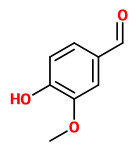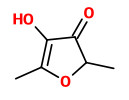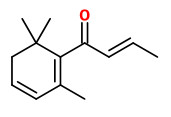Hordeum vulgare L. - Poaceae - barley, Gerste
Annual plants, commonly (worldwide in all non-tropical countries and in montane areas of tropics) cultivated as a food and fodder plant.
„Barley grains are commonly made into malt in a traditional and ancient method of preparation.“
https://en.wikipedia.org/wiki/Barley
„We identified volatile compounds of barley flour and determined the variation in volatile compound profiles among different types and varieties of barley. Volatile compounds of 12 barley and two wheat cultivars were analyzed using solid phase microextraction (SPME) and gas chromatography. Twenty-six volatiles comprising aldehydes, ketones, alcohols, and a furan were identified in barley. 1-Octen-3-ol, 3-methylbutanal, 2-methylbutanal, hexanal, 2-hexenal, 2-heptenal, 2-nonenal, and decanal were identified as key odorants in barley as their concentration exceeded their odor detection threshold in water. Hexanal (46−1269 μg/L) and 1-pentanol (798−1811 μg/L) were the major volatile compounds in barley cultivars. In wheat, 1-pentanol (723−748 μg/L) was a major volatile. Hulled barley had higher total volatile, aldehyde, ketone, alcohol, and furan contents than hulless barley, highlighting the importance of the husk in barley grain aroma.“
[Cramer, Anne-Chrystelle J., et al. „Analysis of volatile compounds from various types of barley cultivars.“ Journal of agricultural and food chemistry 53.19 (2005): 7526-7531]
barley malt
„Malt is germinated cereal grain that has been dried in a process known as „malting“. The grain is made to germinate by soaking in water and is then halted from germinating further by drying with hot air… Malted grain is used to make beer, whisky, malted milk, malt vinegar, confections such as Maltesers and Whoppers, flavored drinks such as Horlicks, Ovaltine, and Milo, and some baked goods, such as malt loaf, bagels, and Rich Tea biscuits. Malted grain that has been ground into a coarse meal is known as „sweet meal“. https://en.wikipedia.org/wiki/Malt
„The volatiles from malt, sampled at stages during roasting, were examined by GC odor-port evaluation and by GC-MS. The technique of odor dilution was applied to volatile extracts from samples exhibiting strong malt-like characteristics. Seven odors from the GC column persisted through several dilutions. 3- and 2-methylbutanal were responsible for the odors with the highest dilution factors which had malty characteristics. The other five odors were malty or cereal-like; ethylmethylpyrazines and maltol may contribute to these odors, but other compounds responsible were present at very low concentrations and have not yet been identified. The levels of 2- and 3-methylbutanal increased dramatically in malt during roasting.“
[Beal, Andrew D., and Donald S. Mottram. „Compounds contributing to the characteristic aroma of malted barley.“ Journal of Agricultural and Food Chemistry 42.12 (1994): 2880-2884]
„Application of the aroma extract dilution analysis (AEDA) on a distillate prepared from ground caramalt kernels followed by identification experiments revealed 3-methylbutanal (malty), 1-octen-3-one (mushroom-like), methional (cooked potato), (E,E)-2,4-decadienal (fatty, waxy), vanillin (vanilla-like), 2- and 3-methylbutanoic acid (sweaty) and 4-hydroxy-2,5-dimethyl-3-(2H)-furanone (caramel-like) as the most odor-active compounds. Using static headspace/olfactometry, the very volatile odorants dimethyl sulfide (cooked vegetable-like) and 2-methylpropanal (malty) were identified as additional odorants contributing to the overall rye-bread crust-like odour of the caramalt.“
[Fickert, B., and P. Schieberle. „Identification of the key odorants in barley malt (caramalt) using GC/MS techniques and odour dilution analyses.“ Food/Nahrung 42.06 (1998): 371-375]
„After 4-6 days, the so-called green malt is dried in a kiln to obtain pale malt with a residual moisture content of 3.5-4% or dark malt with a residual moisture content of 1.5-2%. Malts can be further processed to [liquid] malt extracts [LME]… For this purpose, the malt grains are milled and mashed with warm water. Application of a specific temperature program results in a substantial enzymatic degradation of biopolymers such as starch and proteins. After separation from the solid grain particles (malt draff), the aqueous phase is concentrated to yield a liquid malt extract (LME) with a syrup-like consistency. The LME can be further dried, e.g. by spray drying, to obtain a crystalline material marketed as dried malt extract (DME)… The olfactory profile of malt extracts is characterized by malty, caramel-like, and honey-like odour notes.“
Main aroma compounds of the light liquid malt extract were methional (cooked potato-like; OAV 1500), (E)-β-damascenone (cooked apple-like; OAV 430), 4-vinyl guaiacol (clove-like; OAV 91), phenylacetaldehyde (honey-like; OAV 70), phenylacetic acid (honey-like; OAV 58).
Main aroma compounds of the dark lipuid malt extract were sotolon (seasoning-like; OAV 780), methional (cooked potato-like; OAV 550), (E)-β-damascenone (cooked apple-like; OAV 410), acetic acid (vinegar-like; OAV 160), maltol (caramel-like; OAV 120), and phenylacetic acid (honey-like; OAV 62).
Other components found in both LME with OAV>1 were vanillin, (2E,4E)-deca-2,4-dienal, guaiacol, isovaleric acid, and furaneol (HDMF).
[Rögner, Nadine S., Veronika Mall, and Martin Steinhaus. „Odour-active compounds in liquid malt extracts for the baking industry.“ European Food Research and Technology 247.5 (2021): 1263-1275]
https://link.springer.com/article/10.1007/s00217-021-03707-z
„Specialty barley malts provide unique aroma characteristics to beer; however, the transfer of specialty malt odorants to beer has not yet been systematically studied. Therefore, three beers were brewed: (1) exclusively with kilned base barley malt, (2) with the addition of a caramel barley malt, and (3) with the addition of a roasted barley malt. Major odorants in the beers were identified by aroma extract dilution analysis followed by quantitation and calculation of odor activity values (OAVs). The caramel malt beer was characterized by outstandingly high OAVs for odorants such as (E)-β-damascenone, 2-acetyl-1-pyrroline, methionol, 2-ethyl-3,5-dimethylpyrazine, and 4-hydroxy-2,5-dimethylfuran-3(2H)-one, whereas the highest OAV for 2-methoxyphenol was obtained in the roasted malt beer. Quantifying odorants in the malts revealed that the direct transfer from malt to beer played only a minor role in the amount of malt odorants in the beers, suggesting a substantial formation from precursors and/or a release of encapsulated odorants during brewing.“
[Féchir, M., Reglitz, K., Mall, V., Voigt, J., & Steinhaus, M. (2021). Molecular Insights into the Contribution of Specialty Barley Malts to the Aroma of Bottom-Fermented Lager Beers. Journal of Agricultural and Food Chemistry, 69(29), 8190-8199]
whisky
„Sweet characters are important in whisky flavour but their origins are not clear. In 23% abv grain whisky,
sweetness can be evoked by diacetyl (47% respondents), maltol (38%), vanillin (28%), furfural (26%), ethyl
hexanoate (24%), isoamyl acetate (15%), whisky lactone (10%)… vanillin is linked to woody-sweet, also vanilla (58%), toffee (35% - toffee, caramel, fudge and chocolate) and sweet (28%). Whisky lactone was described as coconut (84% of respondants), but has also a sweet almond character (nutty, 11%, marzipan, 7% and almond, 4%). Nutty is related to sweet taste character. 4-Vinyl guaiacol contributes sweet-woody character to whiskies. Sweet-smoky (32%) is linked to wood-derived phenols: spicy (17% - spicy, nutmeg, ginger, clove and aromatic), vanilla (13%) and woody (7%). Maltol evoked candy floss in 44% respondents, with frequent useage of related terms - sweet (39% - sweet and sugary) and caramel (35% - caramel, burnt sugar, toffee).“
[Lee, K‐Y. Monica, et al. „Origins of flavour in whiskies and a revised flavour wheel: A review.“ Journal of the Institute of Brewing 107.5 (2001): 287-313] https://onlinelibrary.wiley.com/doi/pdfdirect/10.1002/j.2050-0416.2001.tb00099.x

Hordeum vulgare ripe, two rows. (2009)
Wikimedia Commons, Author: Rasbak CC BY-SA 3.0




